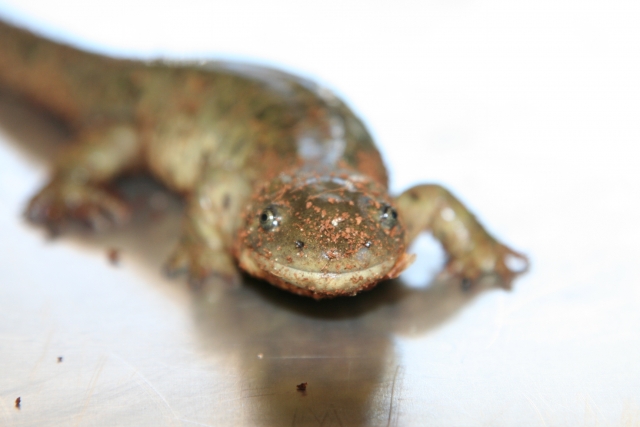Help hoppers have a safe passage
With the recent warm weather and the coming spring rains, the second annual Gilpin Boothman’s Oxbow Amphibian Crossing Project is poised to take off.
On Wednesday, April 3 more than 40 people gathered in the basement of the Boundary Museum to see a presentation by biologist and project coordinator Jenny Coleshill.
Coleshill, along with the Boundary Habitat Stewards, the Granby Wilderness Society and the Christina Lake Stewardship Society, undertook this project for the first time last year.
The project was deemed a great success and Coleshill gathered a lot of important information about the local amphibian population including some surprise finds – like the presence of the Spadefoot Toads.
Coleshill hopes that by gathering data, year after year, on our local Pacific Chorus Frogs, Tiger Salamanders, Long-toed Salamanders and Spadefoot Toads, it will help garner assistance in protecting them in the future.
Before this project was started, thousands would be killed along the one-kilometer stretch on Highway 3 now being monitored between the two parks.
“We count them, ID them and transport them safely across the road,” said Coleshill during the presentation. “Little did we know how many there were!”
While the Pacific Chorus Frog is common enough, The Tiger Salamander is a red-listed species in this province. That means there is a concern that their numbers are dwindling. Unlike Alberta and Saskatchewan where Tiger Salamanders are still plentiful, they are only found in a small region of BC – between Grand Forks, west to Keremeos and north to Peachland with the greatest population found in the Okanagan Valley.
Like last year, volunteers have already begun monitoring the area between Gilpin Grasslands Provincial Park, where the amphibians hibernate for the winter, and Boothman’s Oxbow Provincial Park across Highway 3 to breed in the wetlands.
“There have already been many Long-toed Salamanders seen,” said Coleshill. “Three weeks ago they were seen on the Trans Canada Trail.”
Fencing and giving a helping hand
Helping the migrating amphibians is done by installing short fences along strategic locations on the Gilpin side of the highway. These fence lines are then monitored by volunteers nightly to see when the amphibians begin their migration. The first warm wet night in spring starts them off.
When they begin to move, the volunteers come in during the evening and gently scoop up the frogs, toads and salamanders that gather along the fence line and put them into buckets. The buckets full of hopping eager bodies are then carefully taken across the highway where they are all released. This method helps reduce the number of amphibians squished by passing vehicles, thereby helping their survival.
This year’s project will have a few changes. The first is a new obstacle, although a temporary one. The Christina Lake Stewardship Society is participating in a restoration project at Boothman’s Oxbow Provincial Park. The society has $30,000 to help restore a section of the property to its original vegetation. The entire zone was found to have not one native grass or plant, said Coleshill.
For the purposes of the migration, the area will be fenced off to keep the amphibians out of it.
The collecting fences will also be reinstalled over the next week just in time for the annual migration.
This years fencing will be installed this Saturday, April 6. Anyone interested in helping can meet at the Trans Canada Trail entrance to Boothman’s Oxbow Provincial Park at 10:30 a.m.
A Salamander Star
To get people really excited about helping amphibians, Boundary Sentinel reporter, Erin Perkins, brought along her pet Tiger Salamander, Sammy.
Sammy was rescued in North Eastern Alberta and has lived with the Perkins family for almost five years.
He is a very calm and friendly creature who was the feature attraction at the evening event. After the presentation the children (and some of the adults too) watched Sammy as he snacked on crickets. His entertaining eating habits had the group captivated.
To view last year’s Boundary Sentinel article and photos visit: Helping Hands for Hoppers
To help monitor amphibian populations in your area visit the BC Frogwatch Program website at http://www.env.gov.bc.ca/wld/frogwatch/.
























Comments